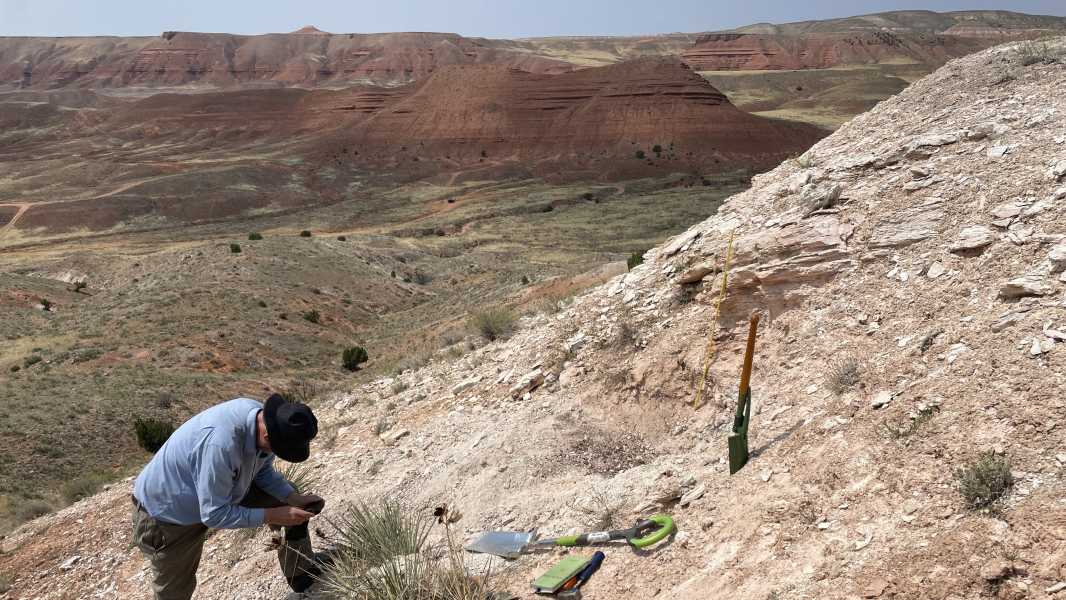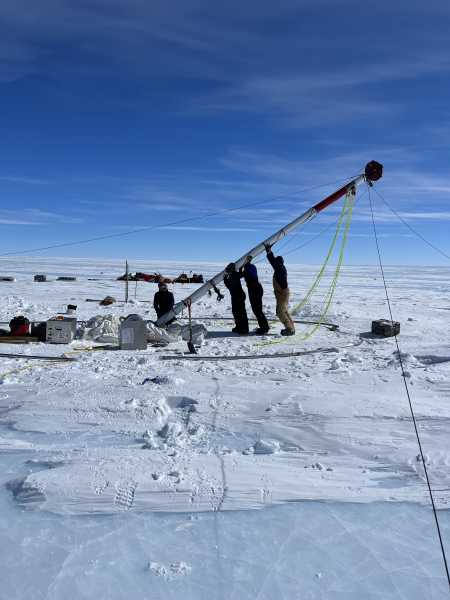
During a field expedition to the Lava Creek Tuff near Shell, Wyoming, researchers found evidence of two significant volcanic eruptions. (Image credit: USGS/Photo by Madison Myers)
Wyoming scientists have found evidence of two mysterious volcanic eruptions that preceded Yellowstone's most recent caldera-forming supereruption.
The ash deposits were hidden beneath the Lava Creek Tuff, a mass of whitish, compressed volcanic ash left by Yellowstone's last major eruption 631,000 years ago. The origin of the newly discovered ash deposits remains unclear, but researchers hope to have answers by fall 2025, when they expect to complete sample analysis.
“At first, I thought it was complicated,” Madison Myers, an assistant professor of igneous processes at Montana State University who was part of the Wyoming excursion, told Live Science in an email. “But as we were walking around, we noticed that there were other units between the white ash layers [of the Lava Creek Tuff]. It was amazing.”
The Lava Creek Tuff is made up of two distinct bodies of compacted ash, component A and component B, indicating that there were changes in the characteristics or composition of the volcanic material ejected during Yellowstone's most recent supereruption. The goal of the fieldwork was to reinterpret the evidence for the two components, Myers said, and the team was “surprised” to find evidence of unknown, older eruptions.
A paper written by Myers and her colleagues in the journal Yellowstone Caldera Chronicles suggests that because the ash deposits are buried beneath the Lava Creek Tuff, the eruptions that produced them must have occurred before 631,000 years ago.
Yellowstone Volcano is known to have produced two super-eruptions before the Lava Creek Tuff eruption—the Mesa Falls Tuff eruption 1.3 million years ago and the Huckleberry Ridge Tuff eruption 2.1 million years ago—and it is possible that these explosions created new ash deposits.
But early analyses suggest that the younger of the two ash deposits is not associated with Yellowstone. “One of the deposits we found contained biotite, a mineral that is not found in most Yellowstone eruptions,” Myers said. “So we had to consider the possibility of a known large eruption containing biotite.”
The most likely candidate, Myers said, is the giant eruption of Bishop Taff Volcano, which formed California's Long Valley Caldera 767,000 years ago.
Meanwhile, the origin of the older of the two ash deposits remains a complete mystery. It’s possible the ash came from an undocumented eruption, as geologists often find deposits with dates that don’t match up with known eruptions, Myers said. “We recently had a similar event in Yellowstone, and we’re still trying to figure out and understand where this new undocumented eruption came from,” she added.
Sourse: www.livescience.com





